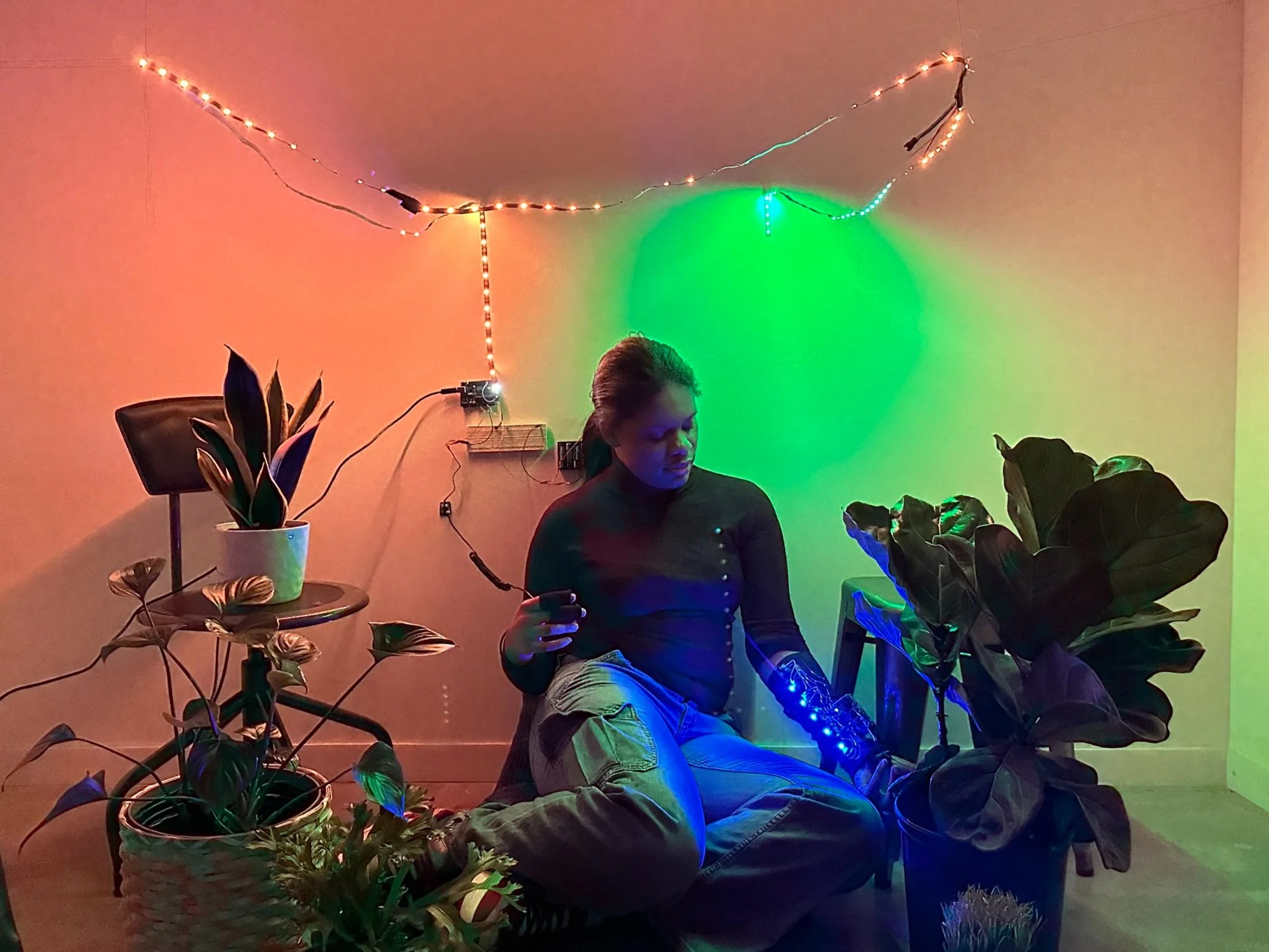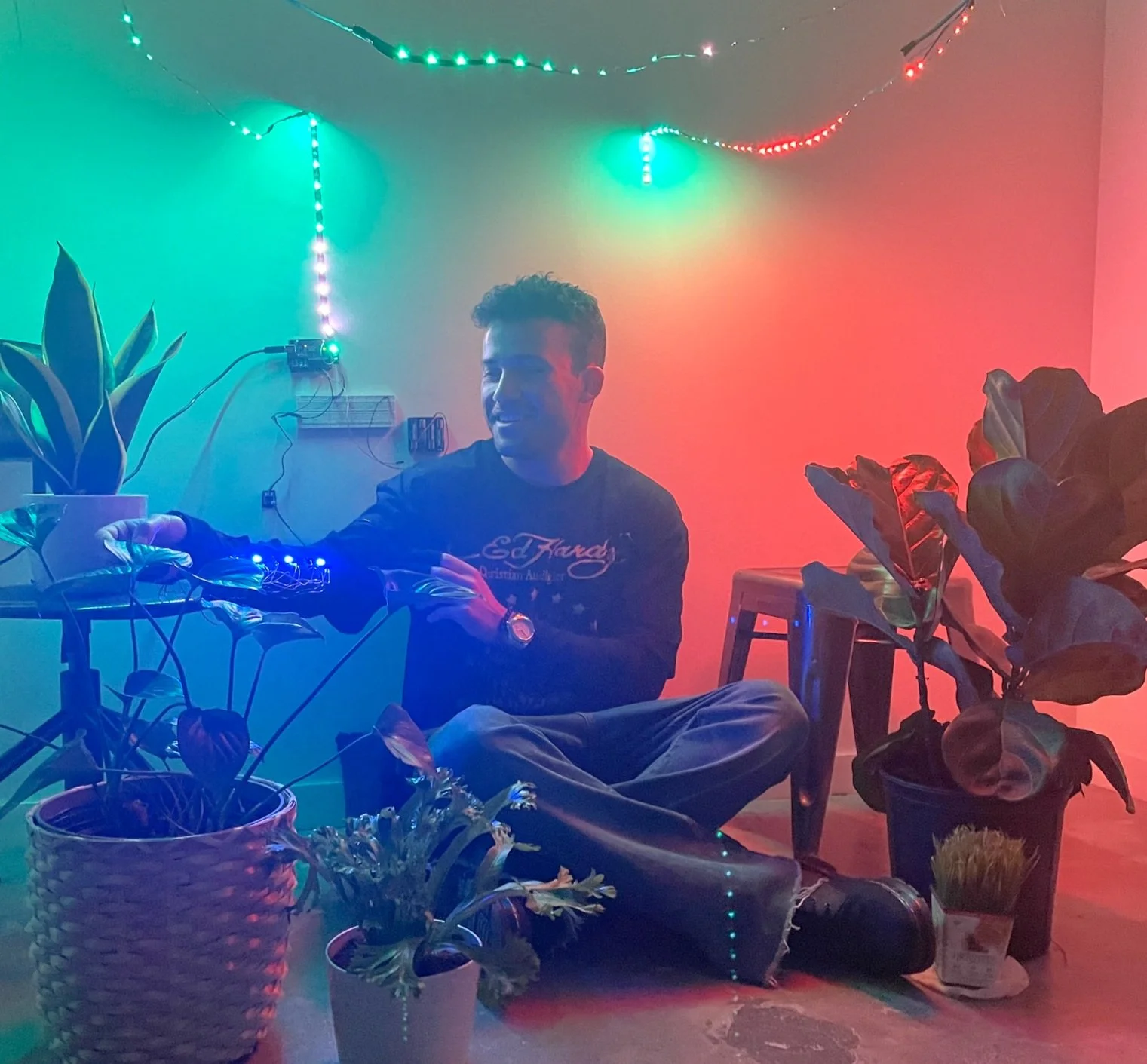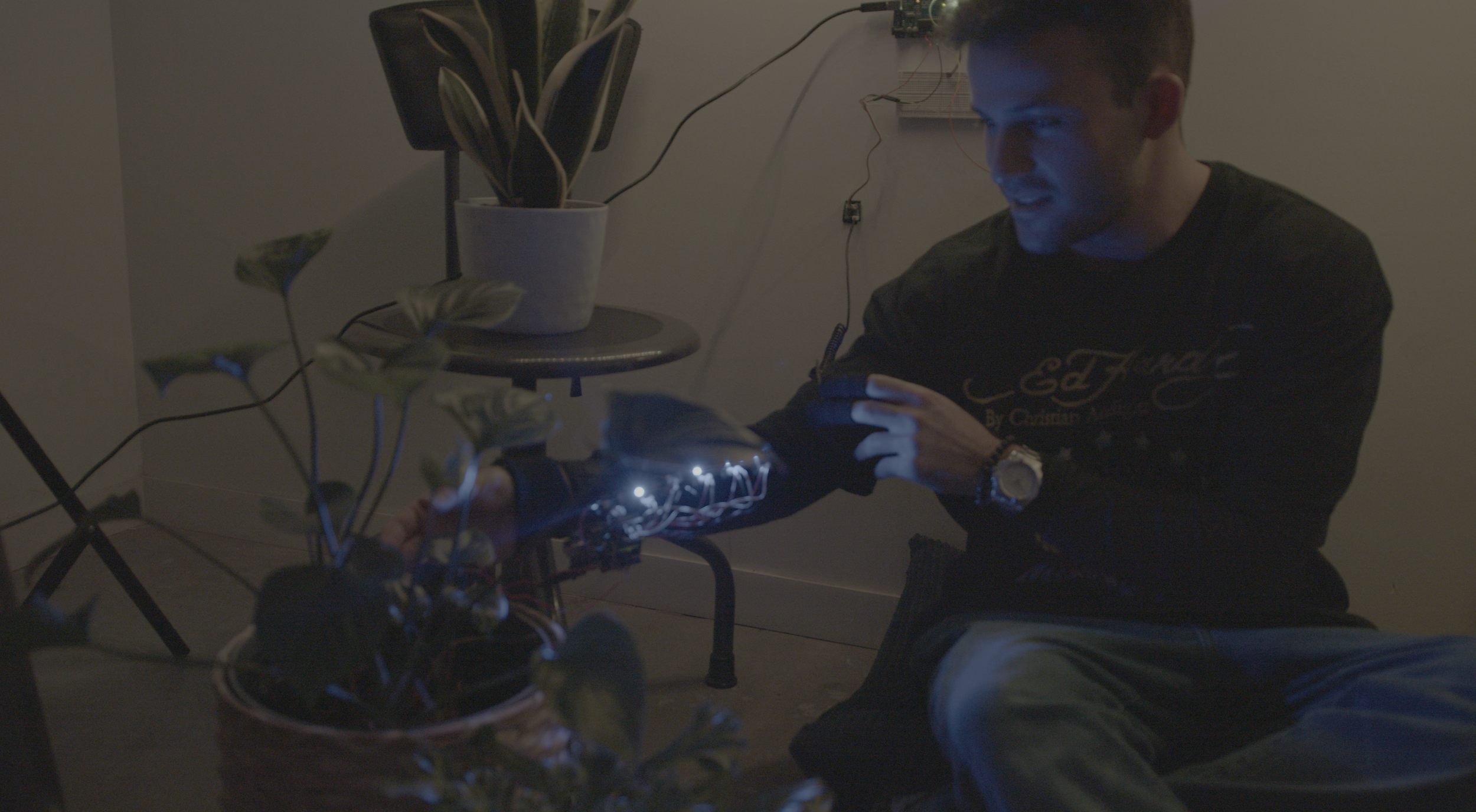
Sensing the Symbiocene:
Towards a Closed Loop of Care Between Humans and Plants
Across the world, many Indigenous societies perceive plants, animals, rivers, mountains and the land itself as relatives—in other words, extensions of the Self. This ontological orientation structured modes of production which allowed for the mutual flourishing of human and non-human beings as a continuous socio-ecological system. Now, we all come from ancestors who were indigenous to some place and who likely shared overlapping elements of this relational worldview. This implies that the modern, anthropocentric worldview was born through a contraction of the Self: an oncological ontology which reduces relatives to resources. This is the perceptual lens from which extractive growth cycles emerge, leading to drastic disarray in the earth’s biogeochemical cycles.
If the structural basis of Climate Change is fundamentally a disorder of perception, can we leverage sensory augmentation technology to mend this sense of alienation? How might this lead to a new ‘politics of nature’?
the (human) team
Inspired by the notion that all living systems seek to minimize stress, we sought to prototype a wearable that allows us to go beyond empathy and directly perceive the stress and wellbeing of plants. To do this, we engineered a glove with conductive fingertips that measures voltage changes in plant tissues and converts the waveforms into patterns of haptic vibrations and light patterns on the user’s forearm. To ‘close the loop,’ we needed a way for the human participant’s emotional states to influence the plant. To achieve this, we consulted Dr. Rosalind Picard’s work and created a wearable that measures the skin conductance of the human participant’s fingertips and correspondingly modulates the ambient lighting of the room. This is why each team member had different characteristic patterns of lighting—we were going through our own personal experiences. Directly feeling the internal activities of the plants would change our emotional states, thus modifying the room’s lighting to influence plant behavior until the human-plant assemblage reaches a steady state. This was designed to be a meditative experience, bridging the sacred with the modern.
The wearable translates the bioelectric waveforms of plant tissues into encoded combinations of haptic vibrations on the skin, which are indicated by the LED lights. This design was inspired by the sensory substitution work of Dr. David Eagleman, leveraging neuroplastic remodeling to decode consistently structured data.





